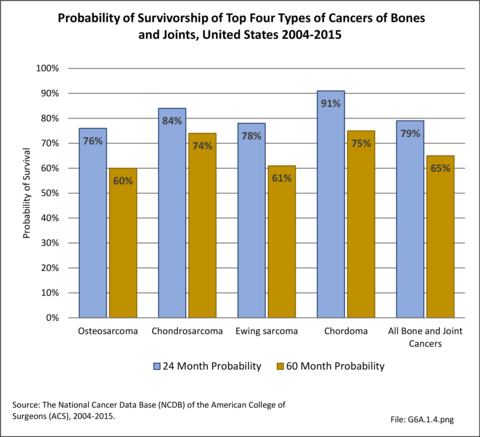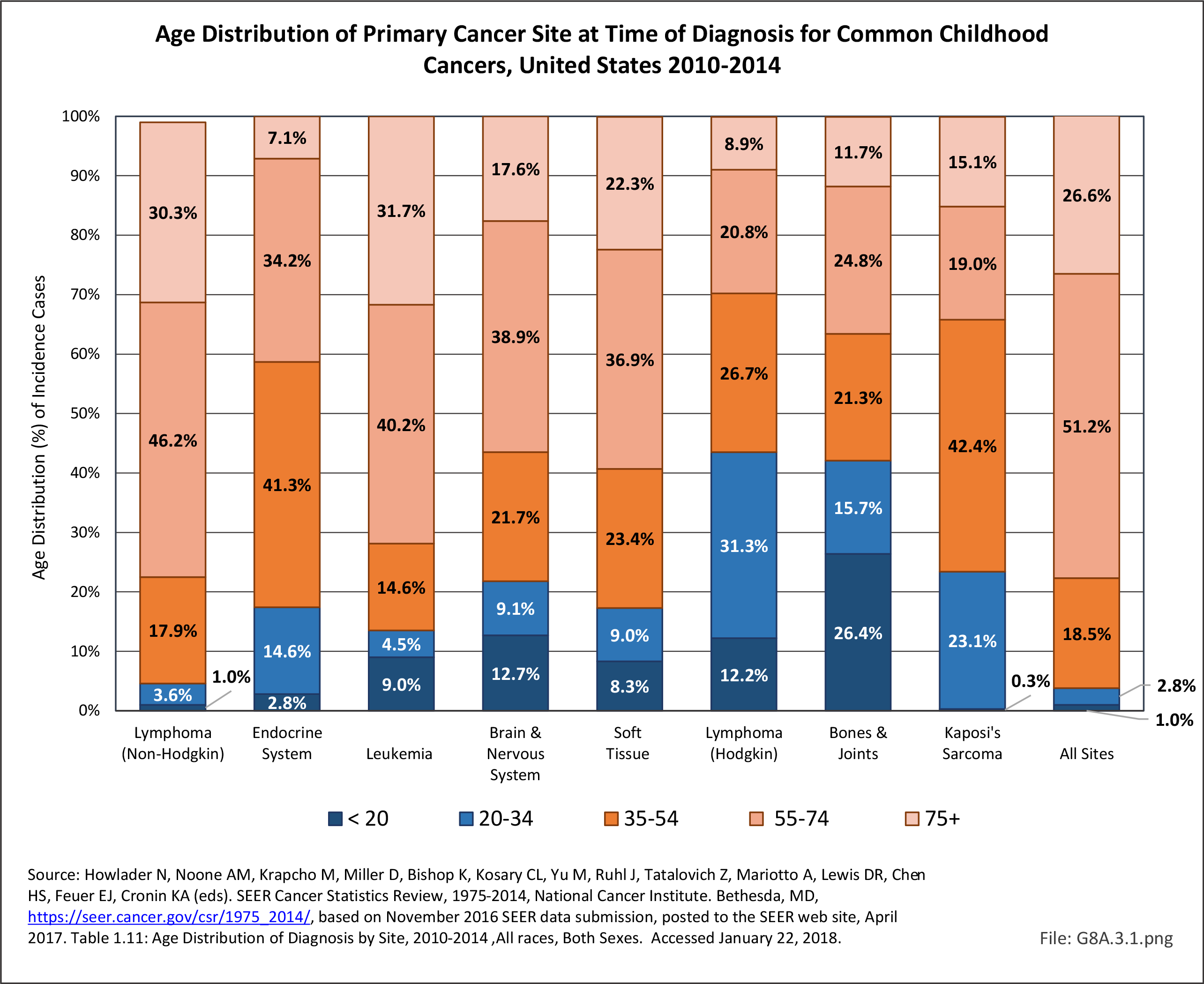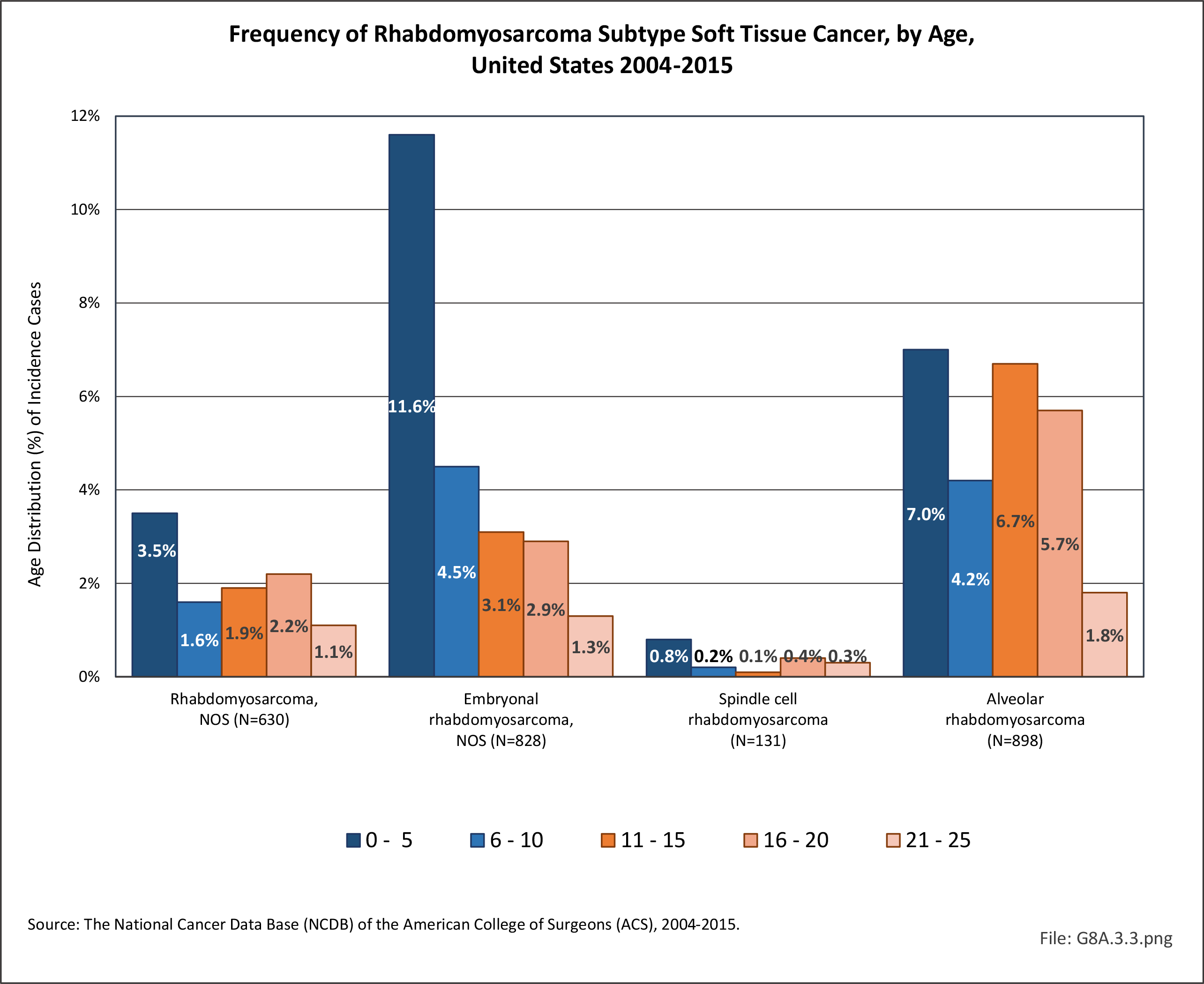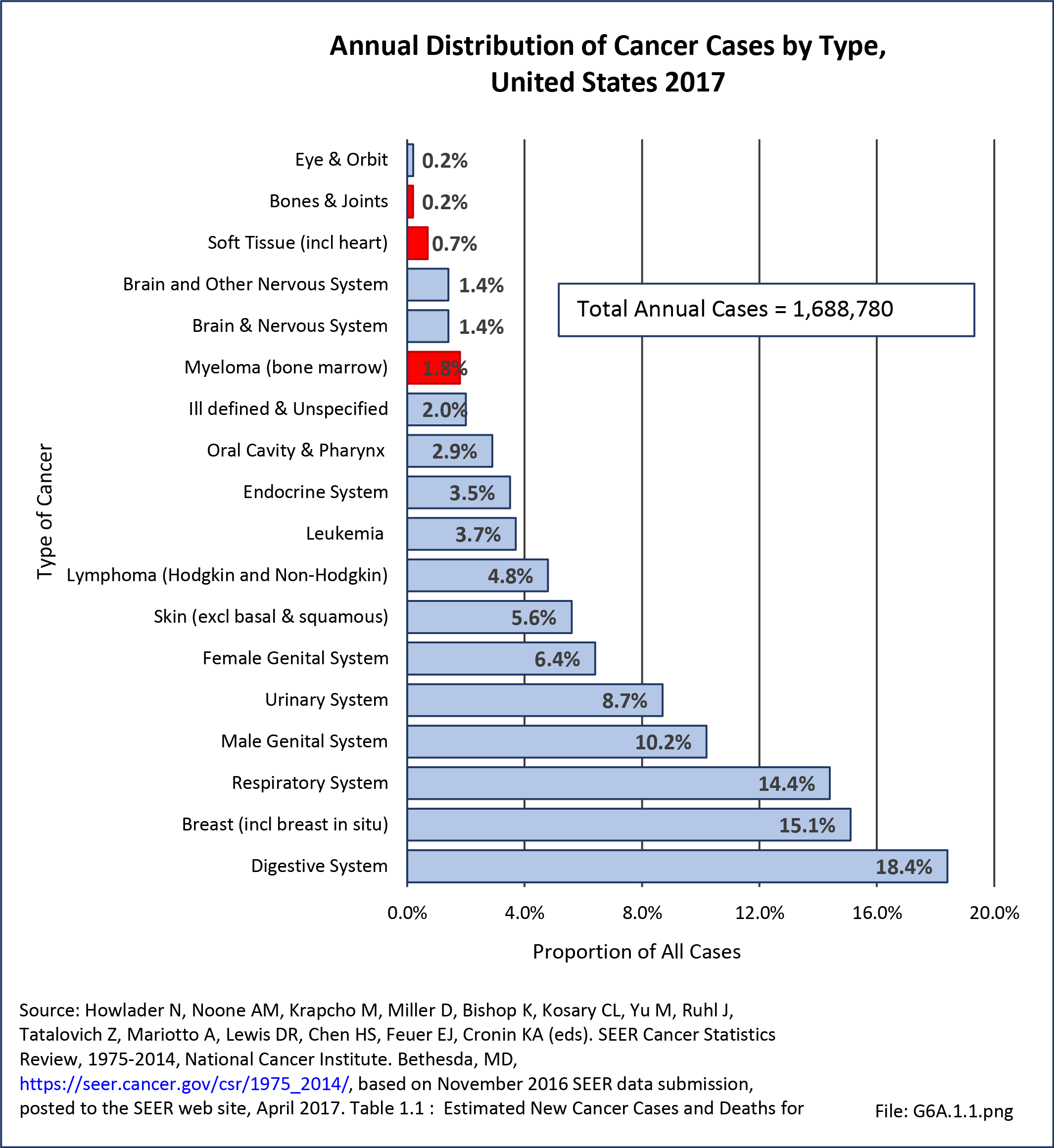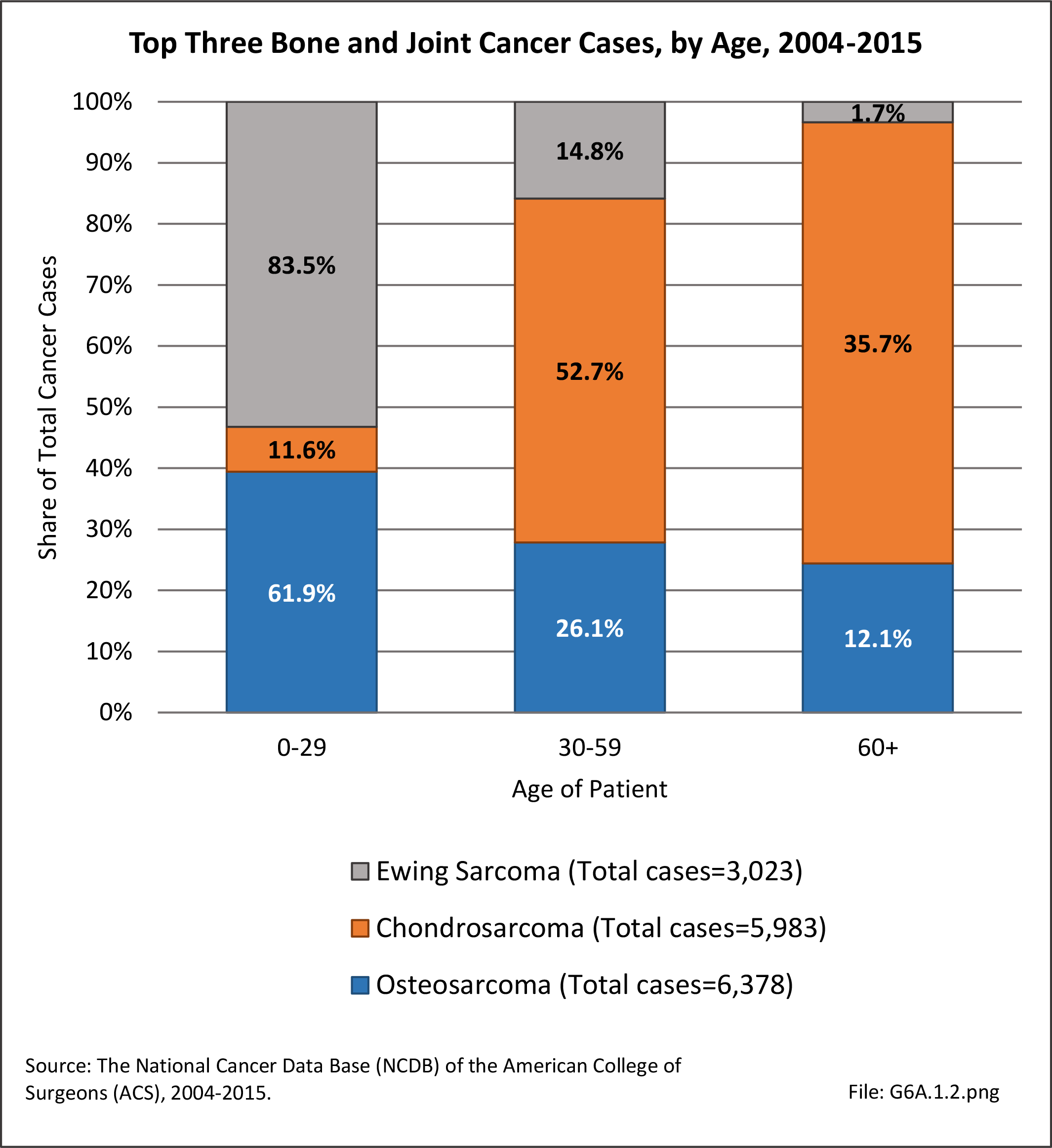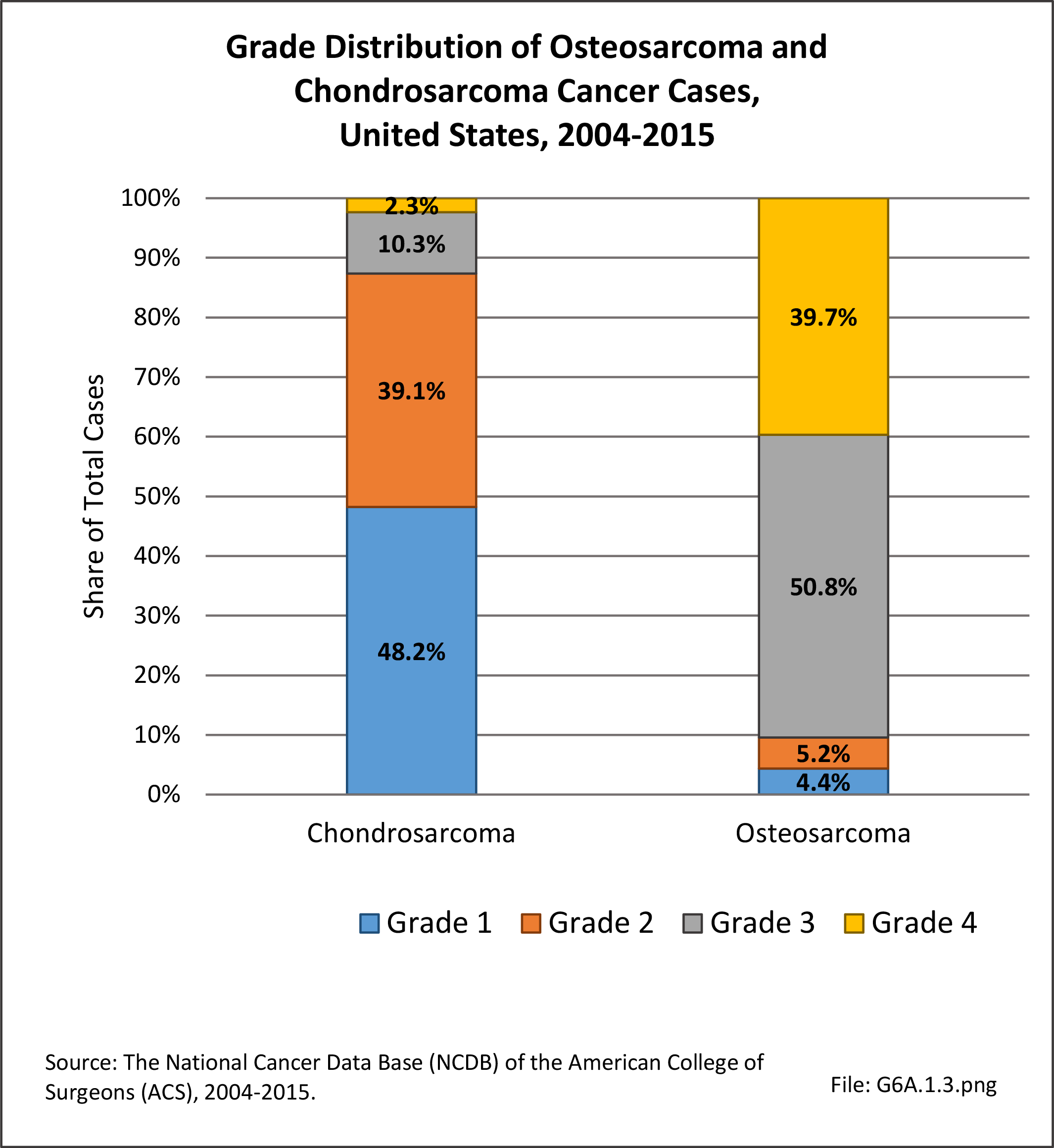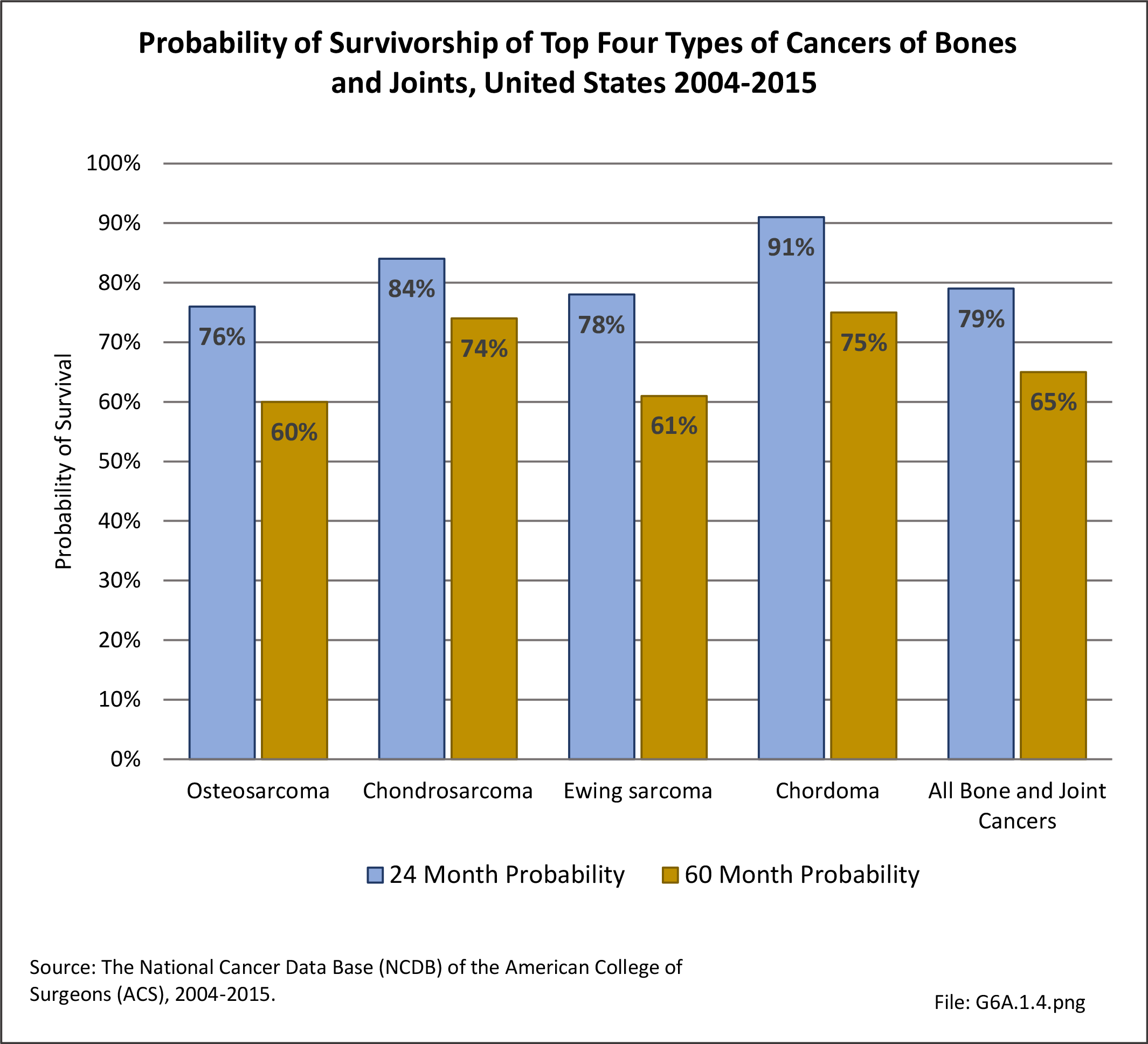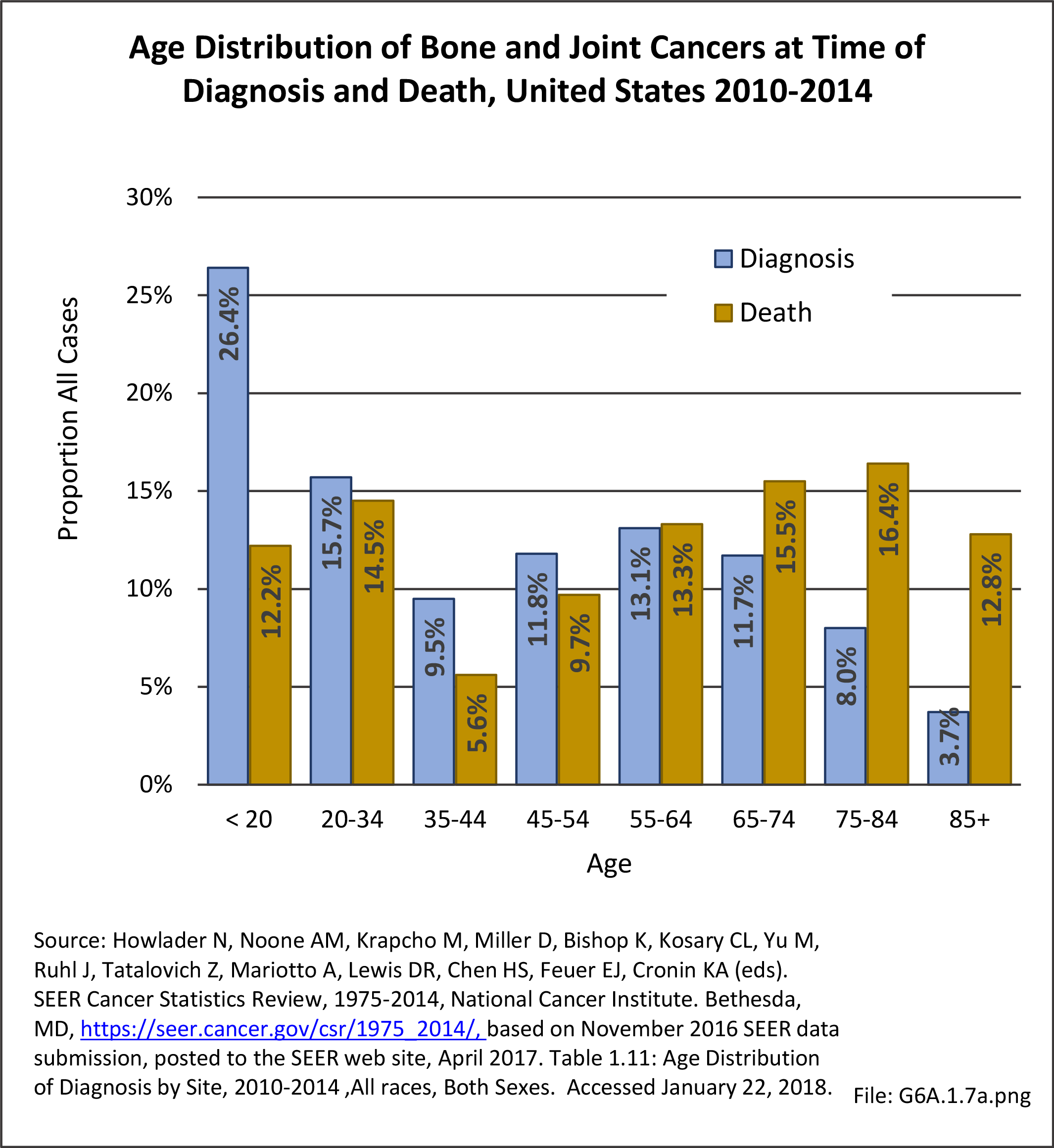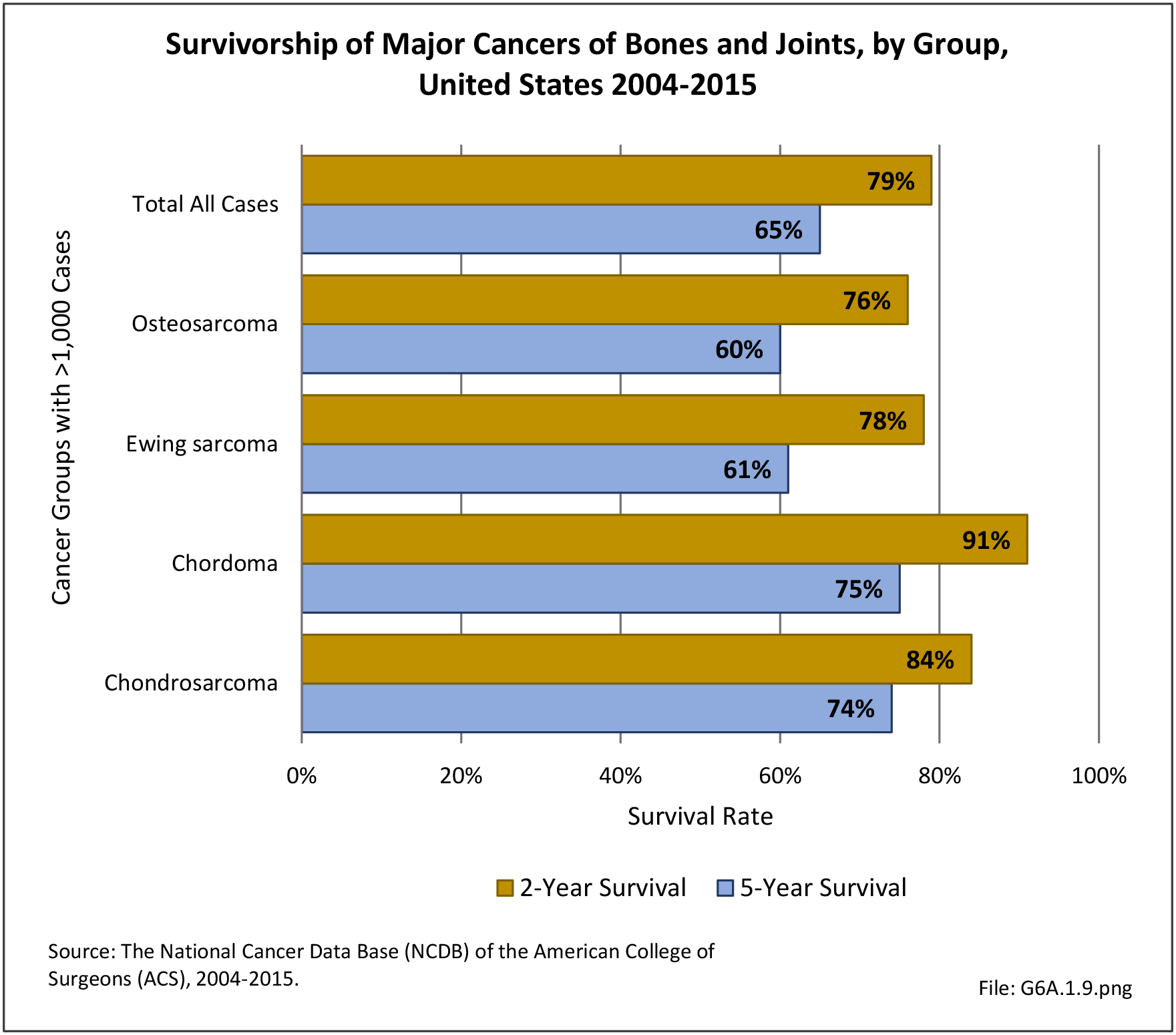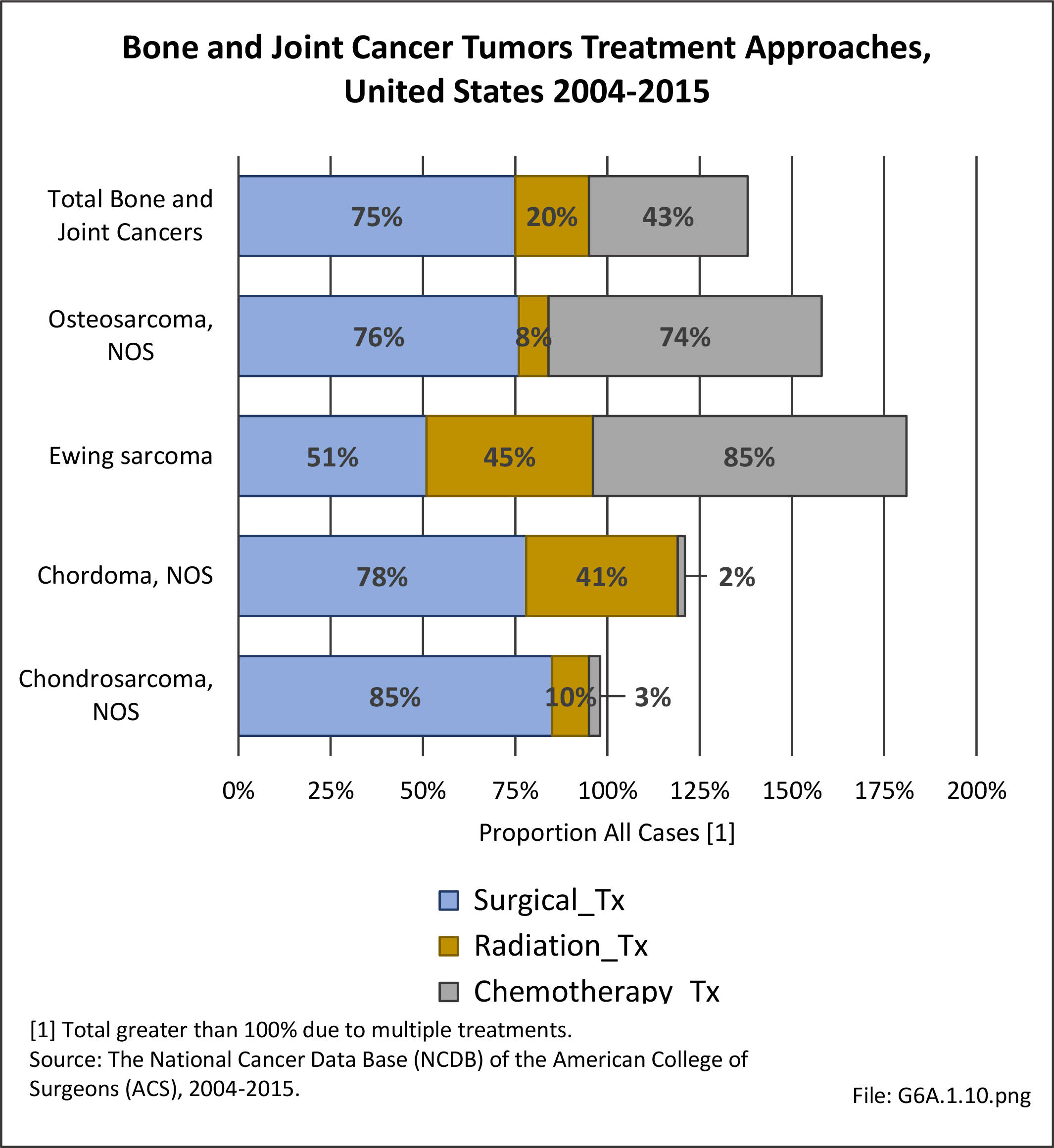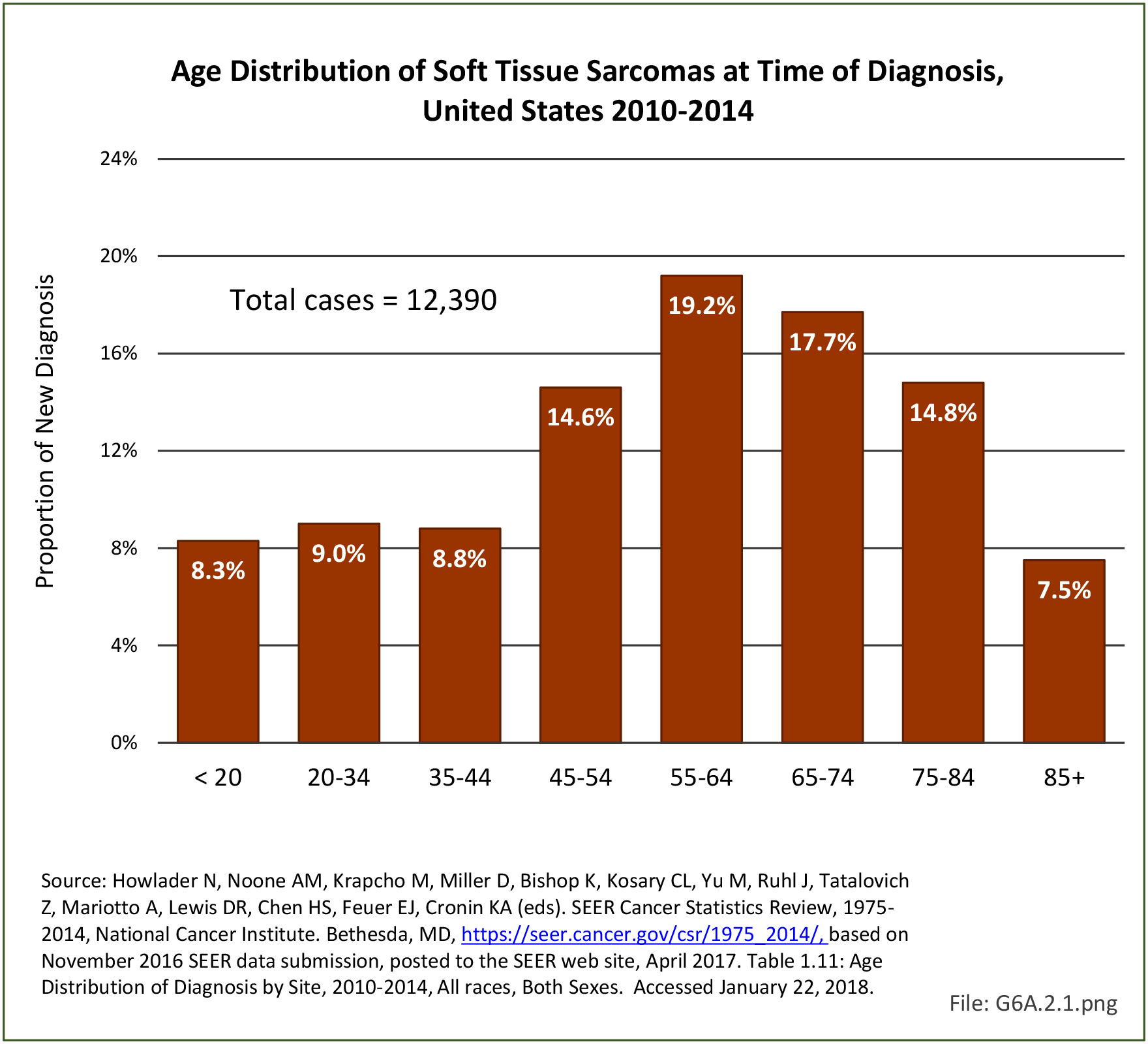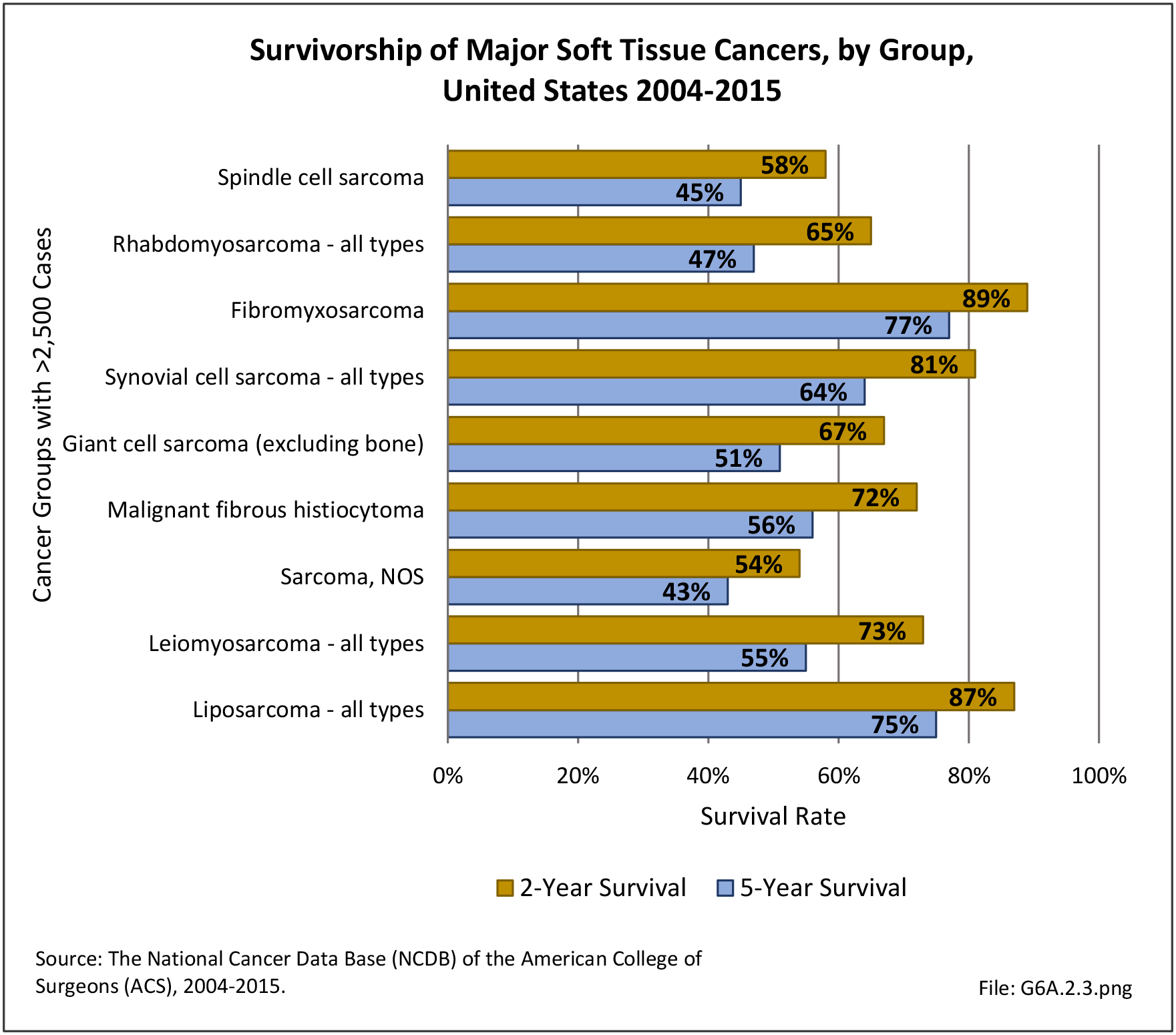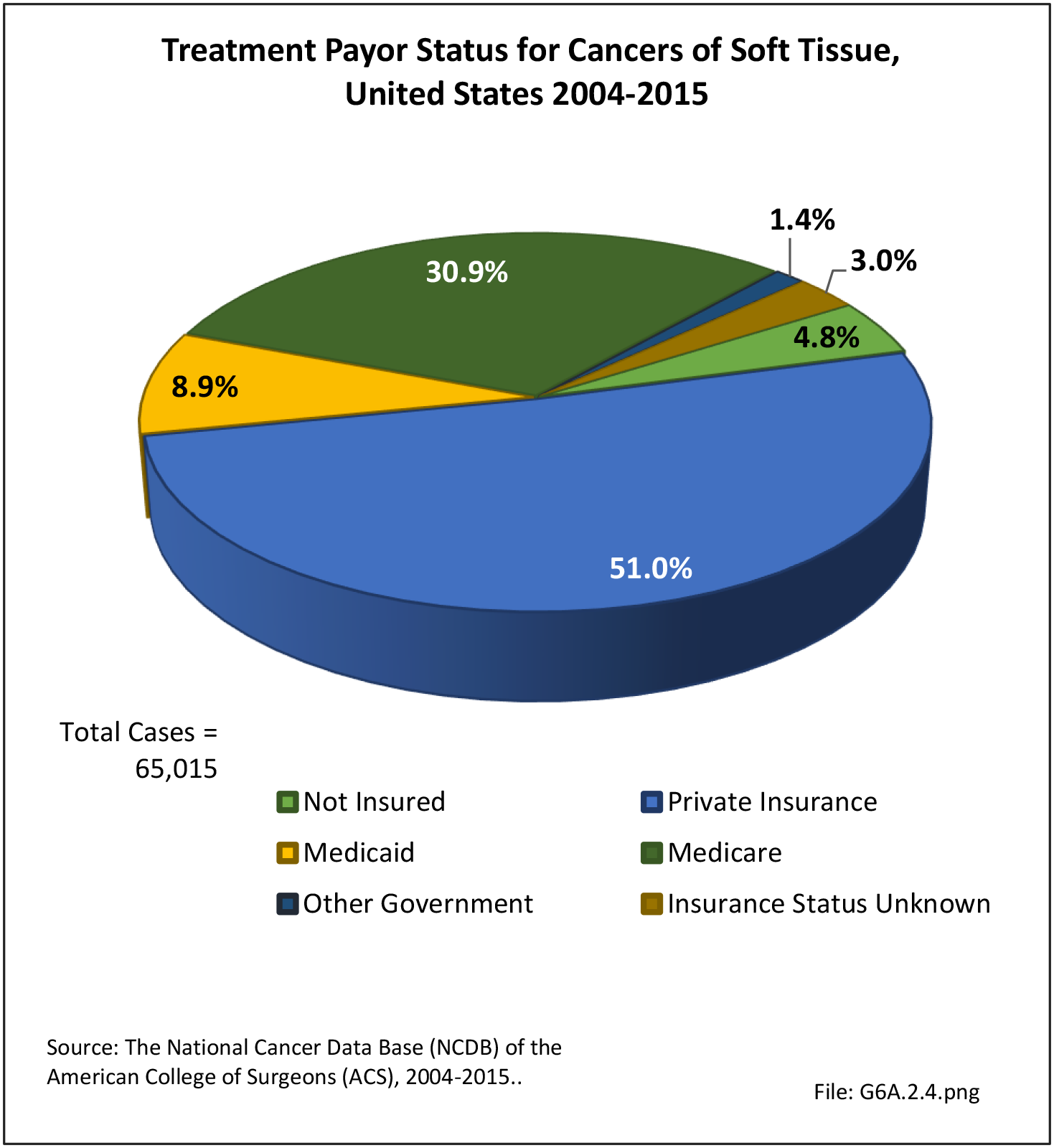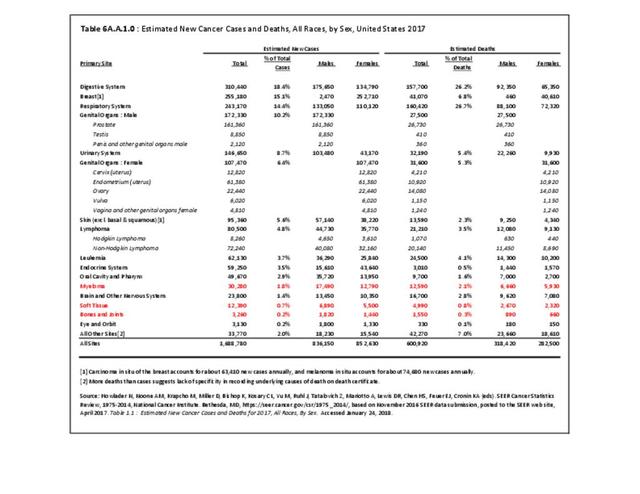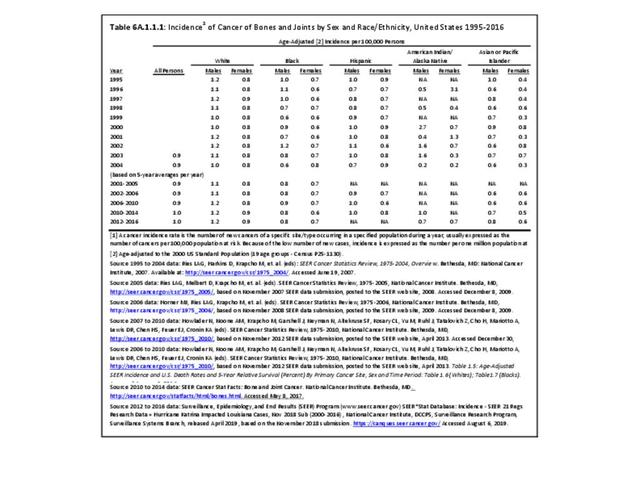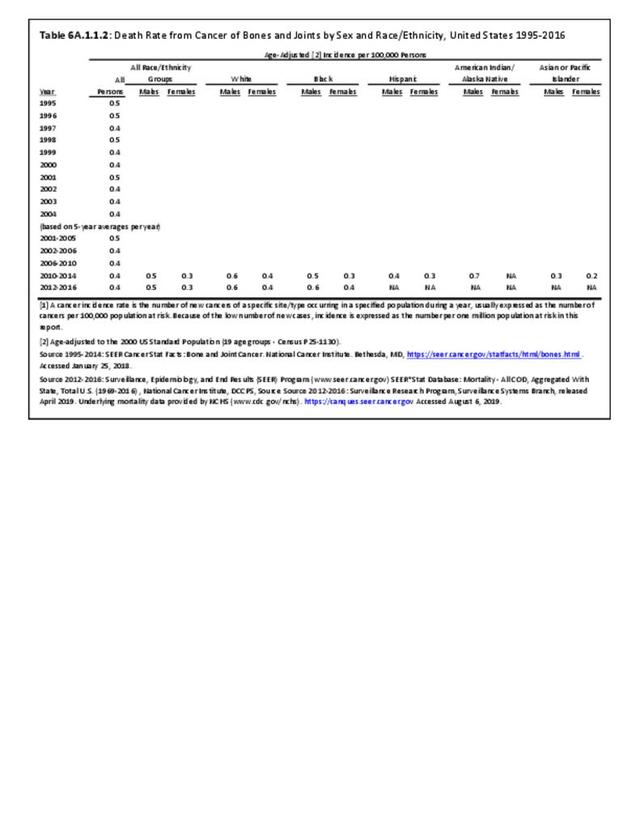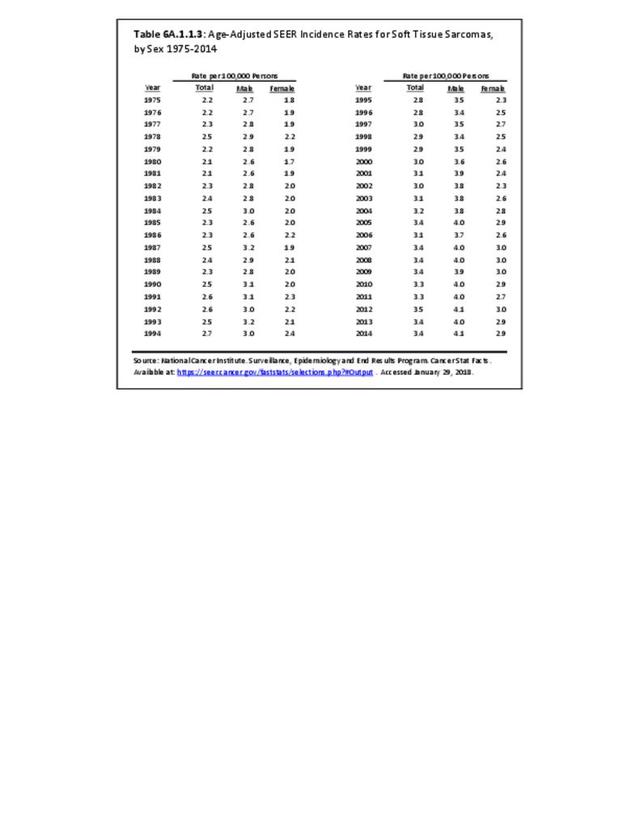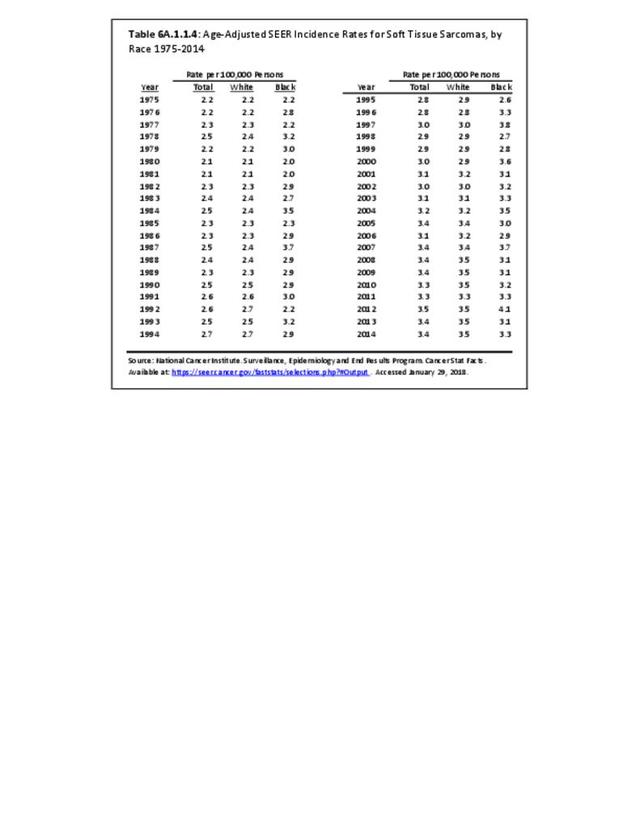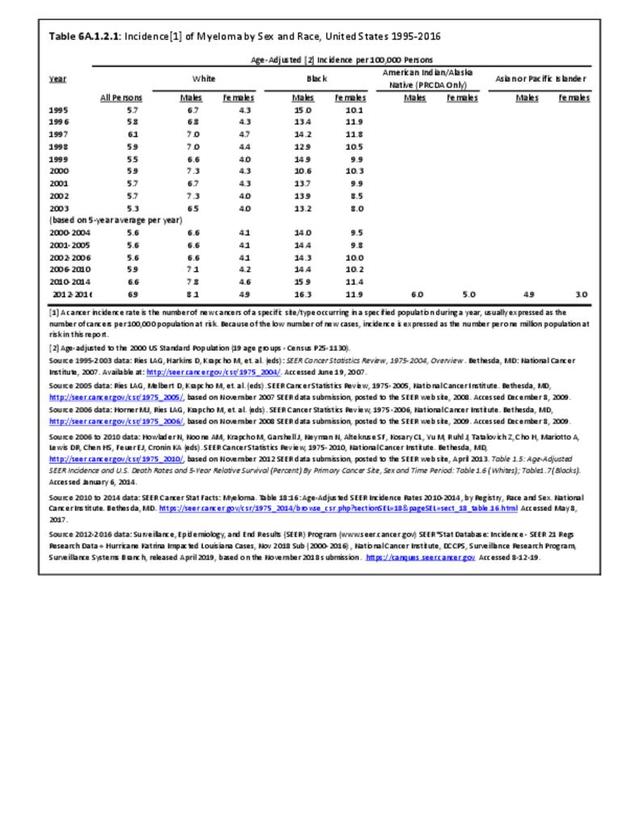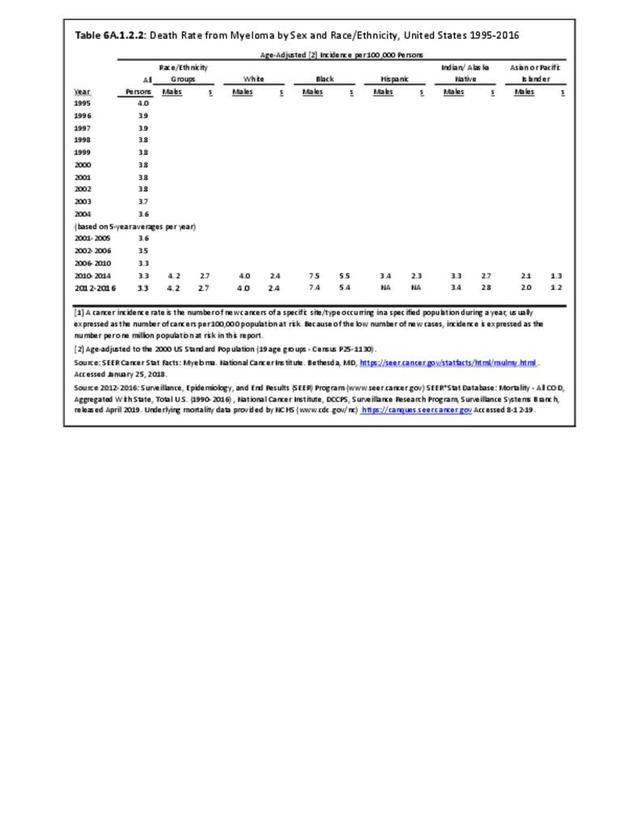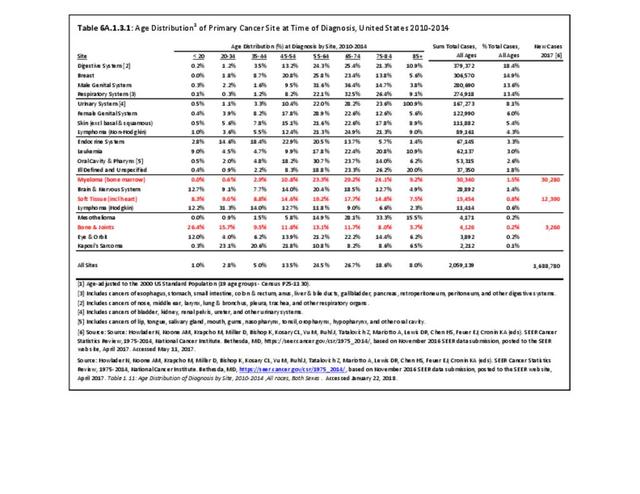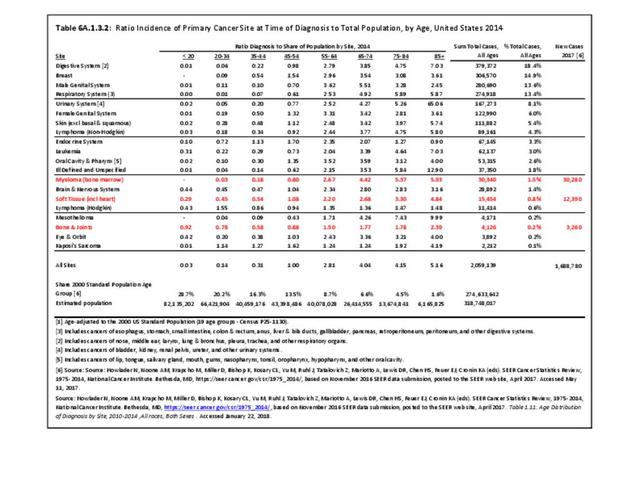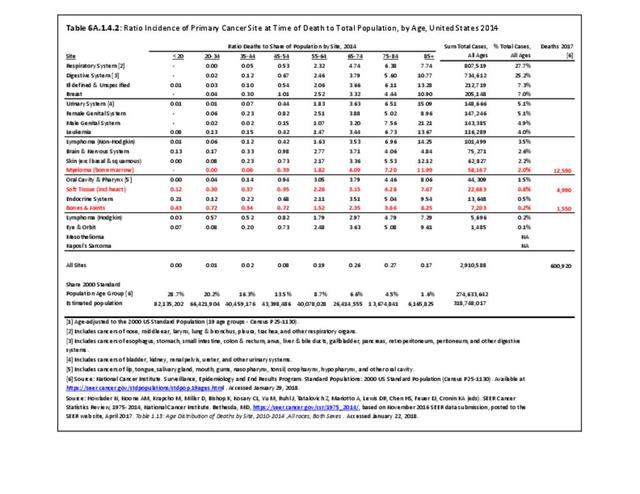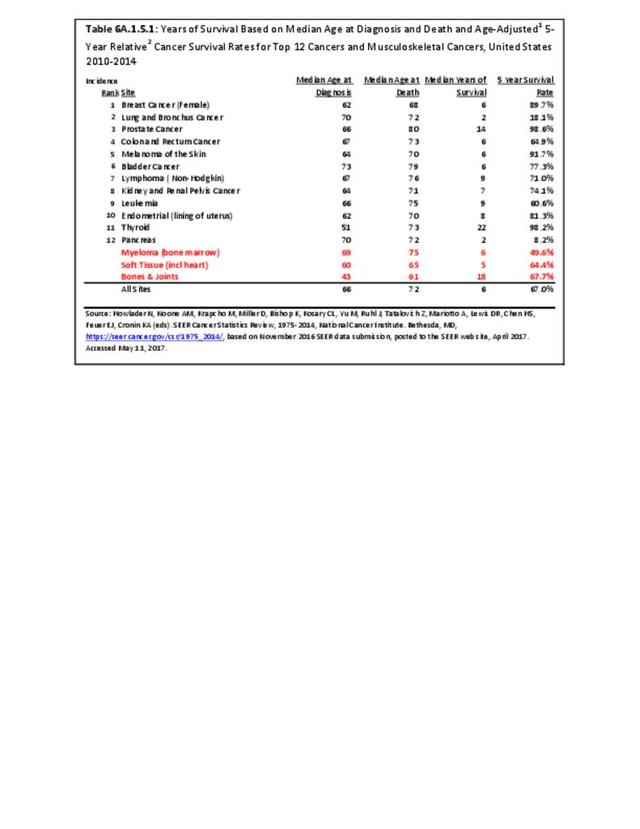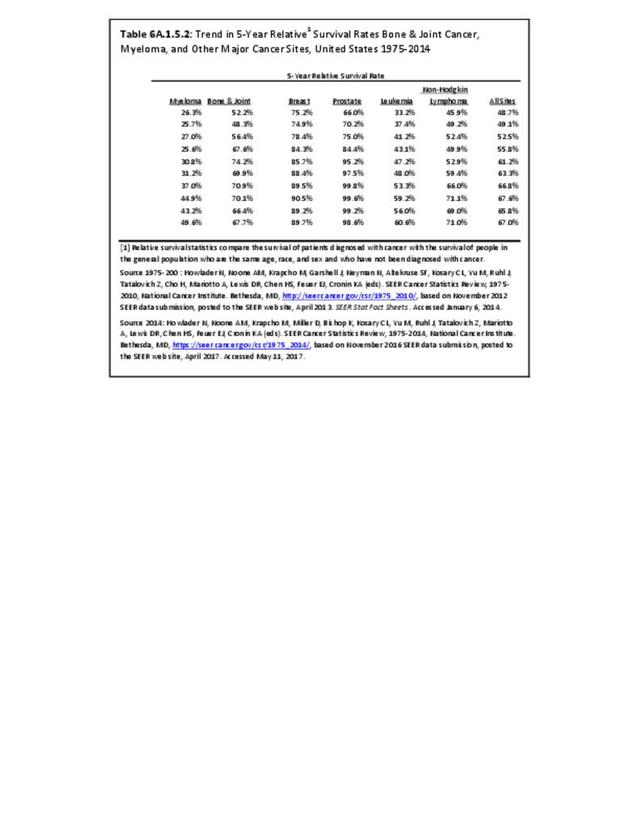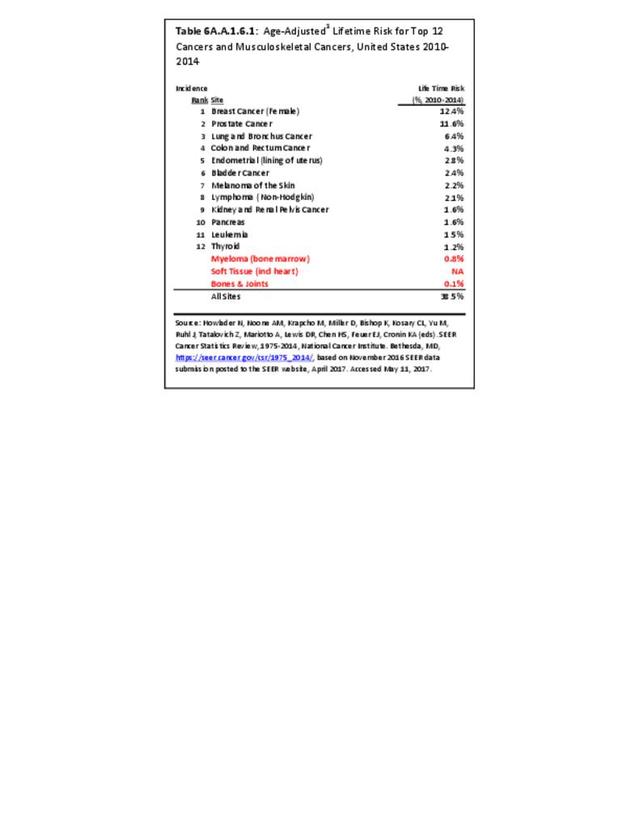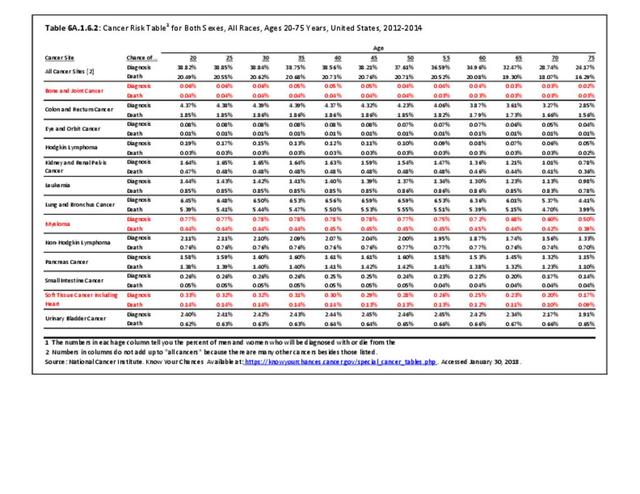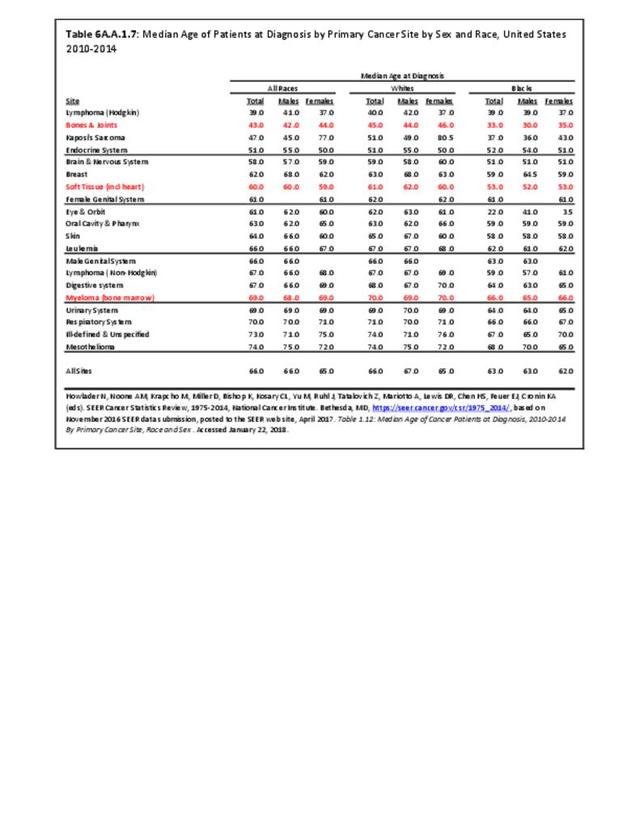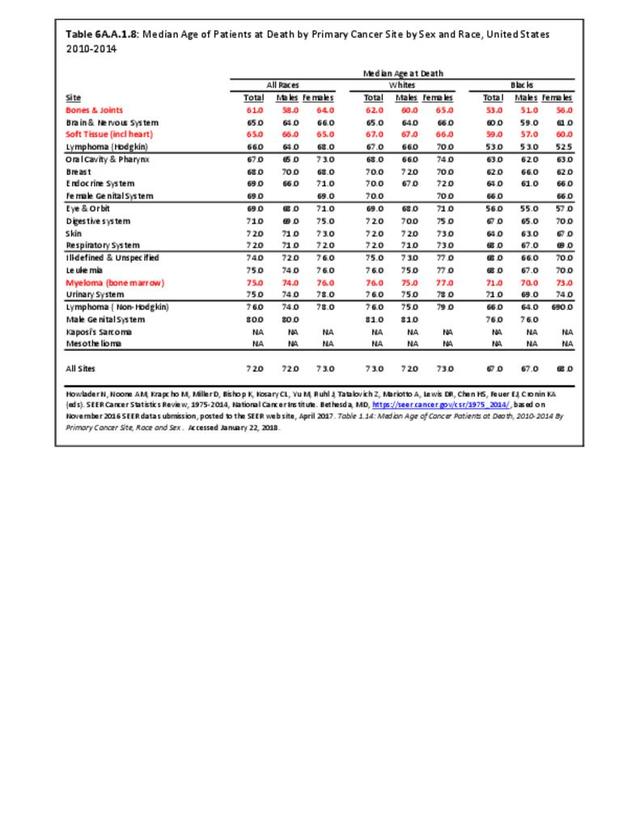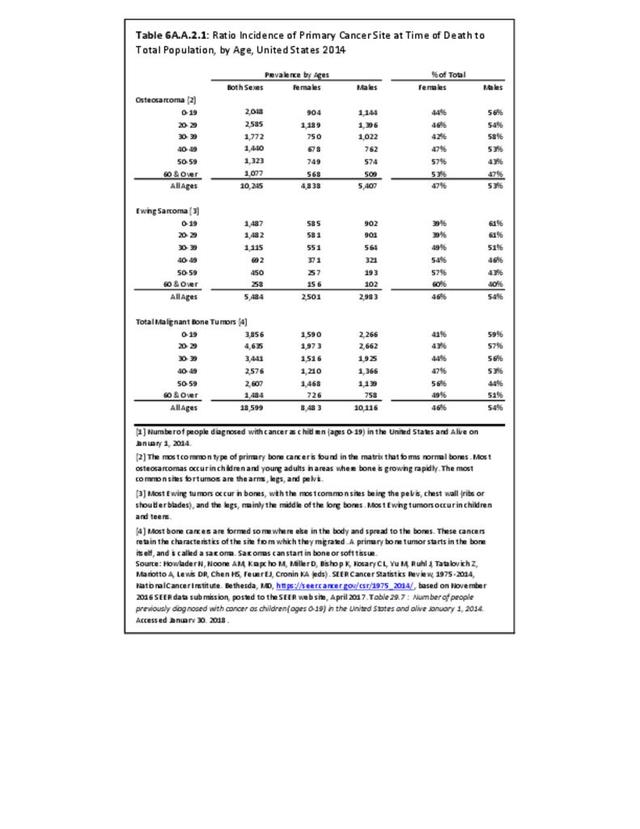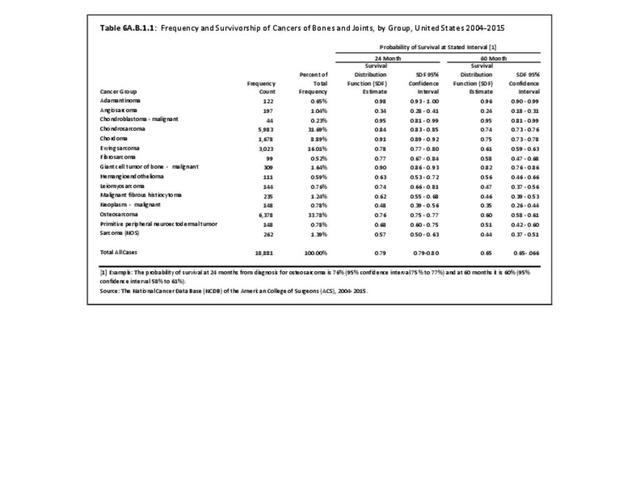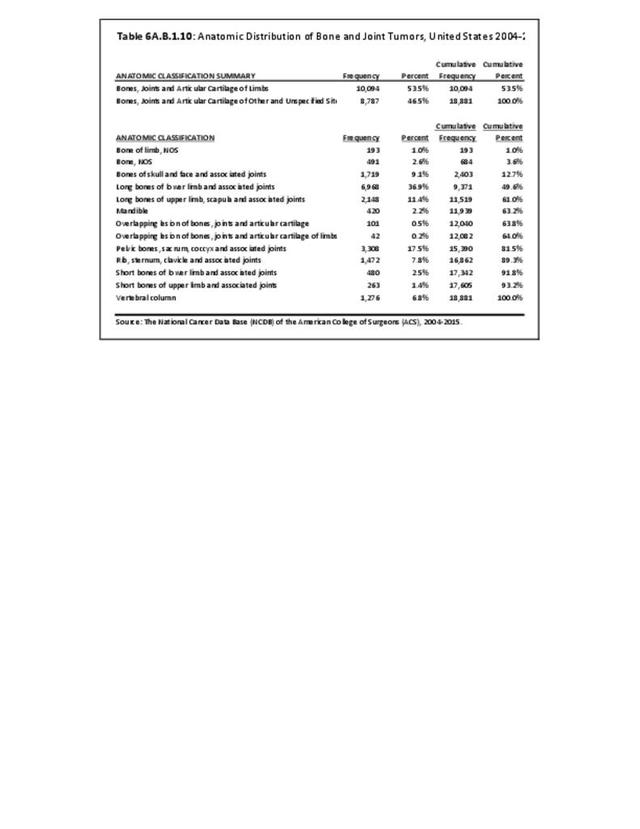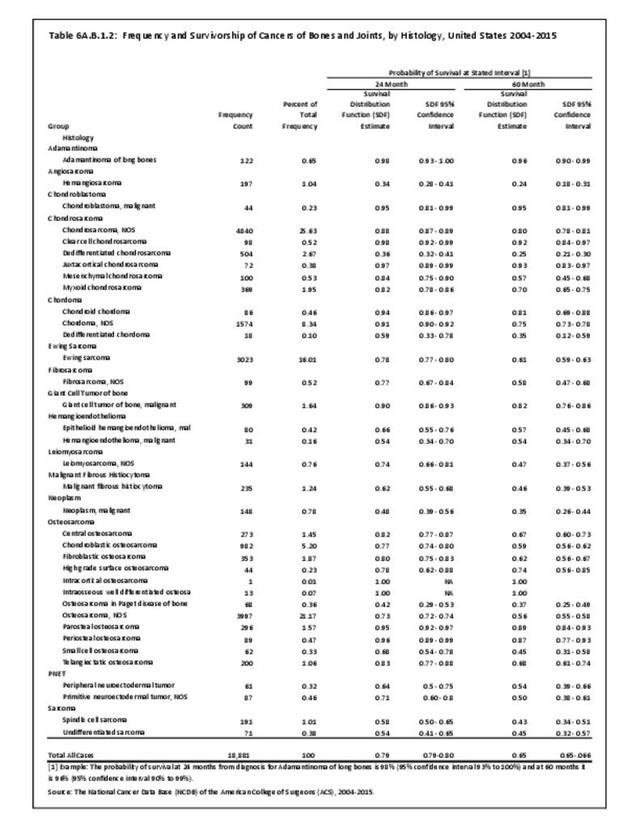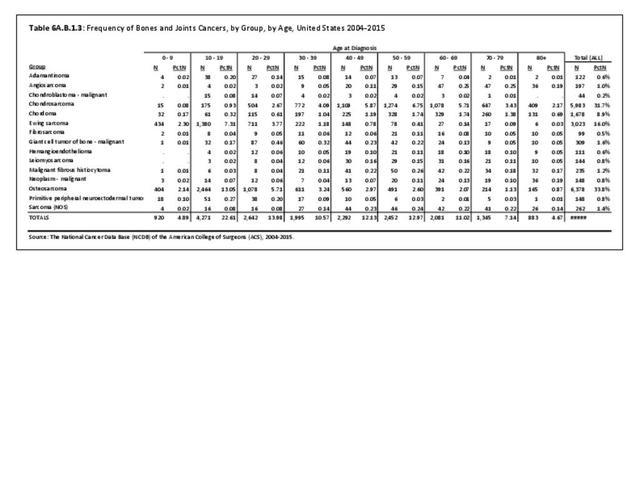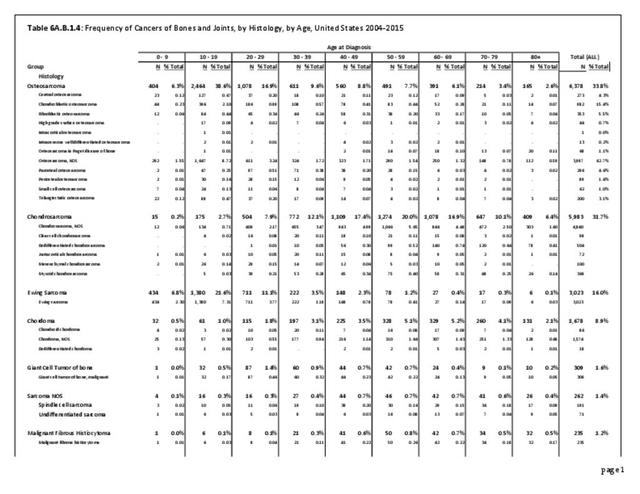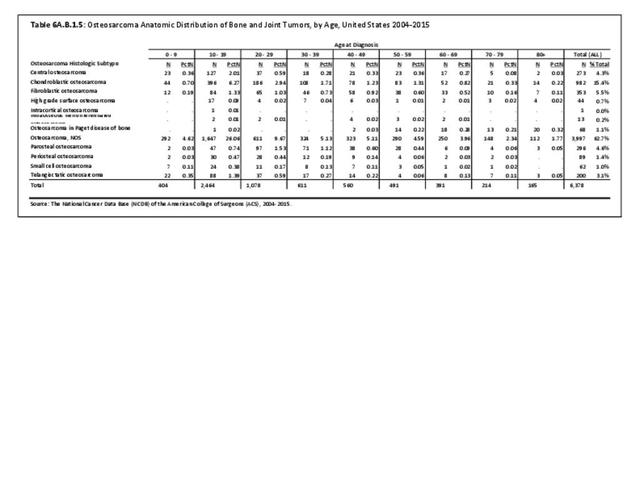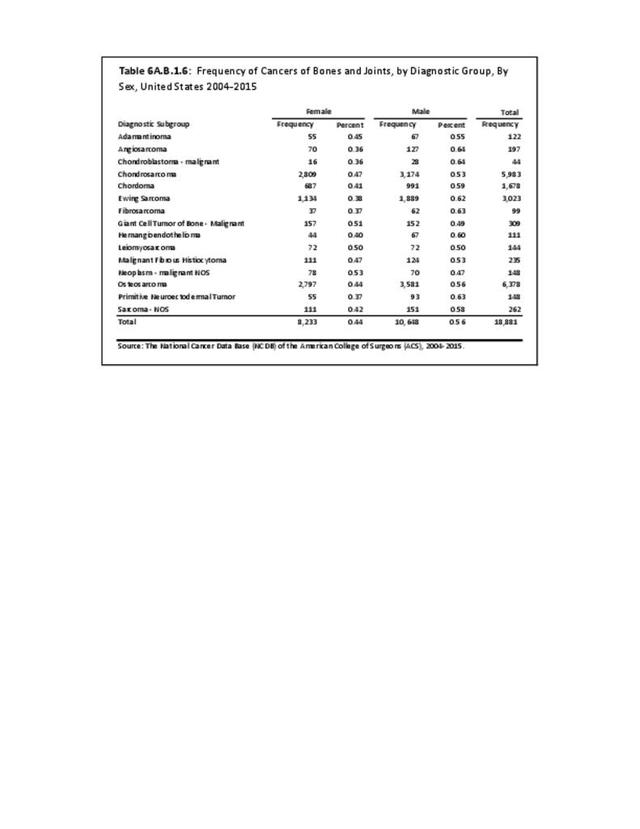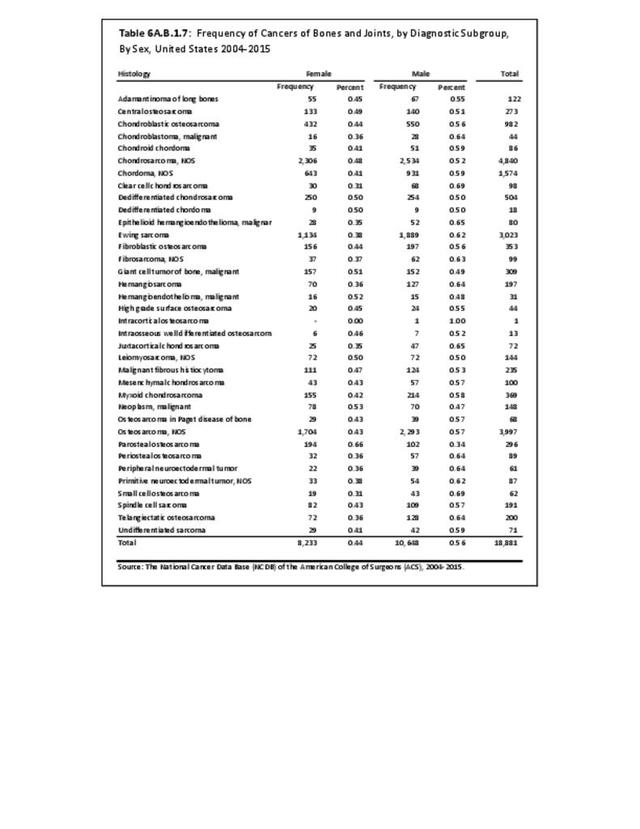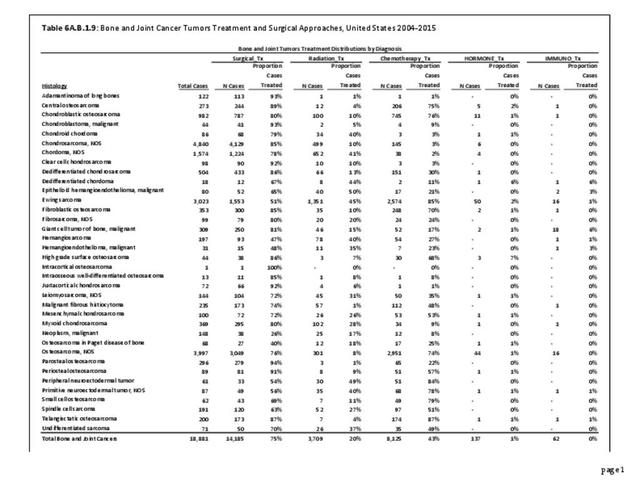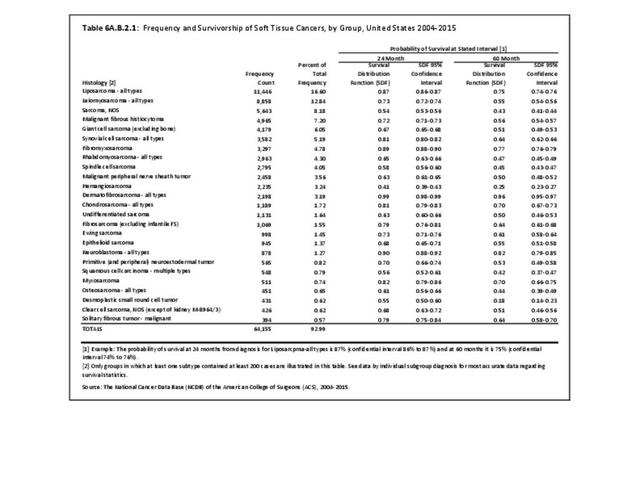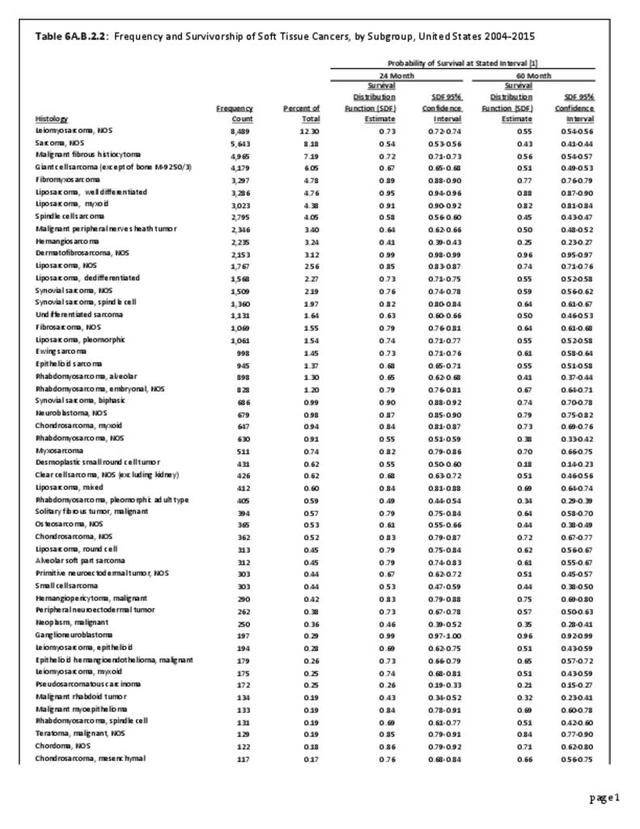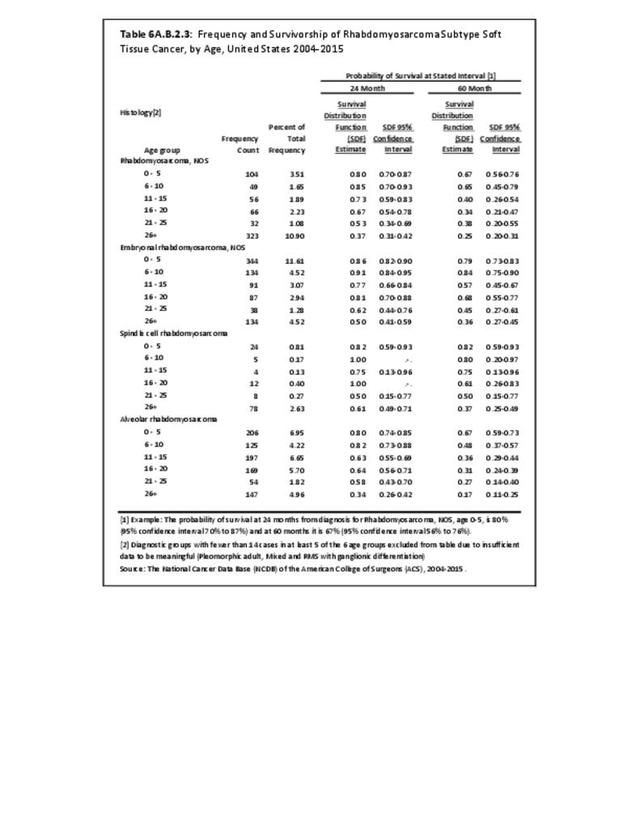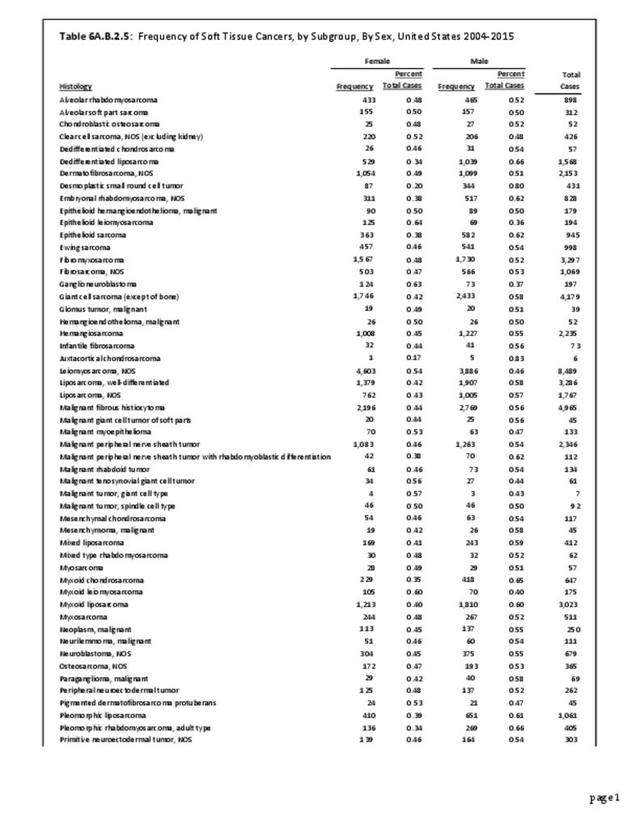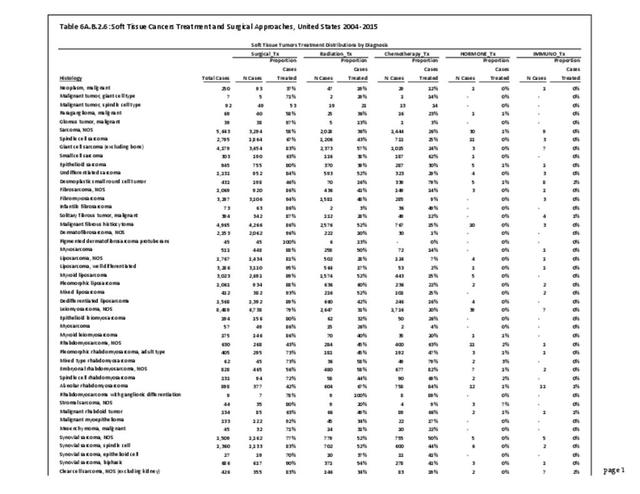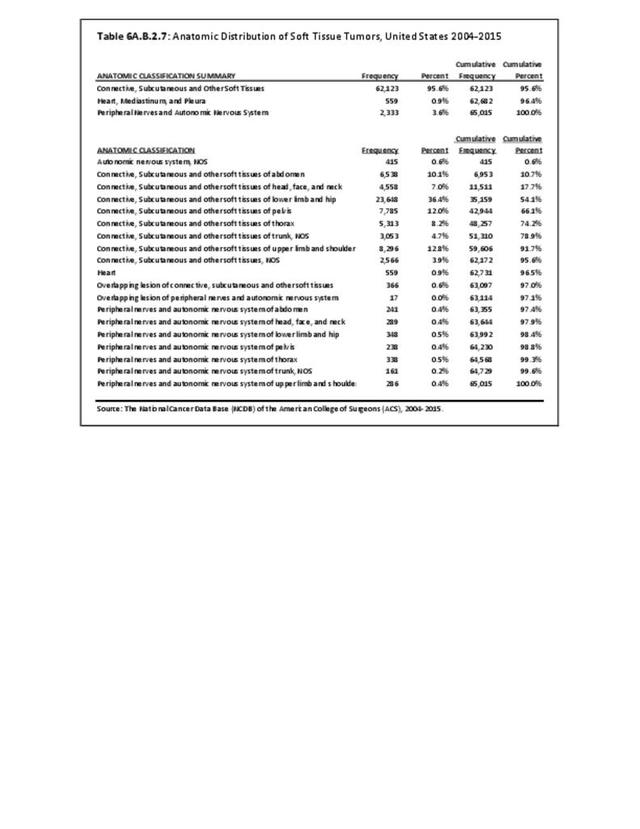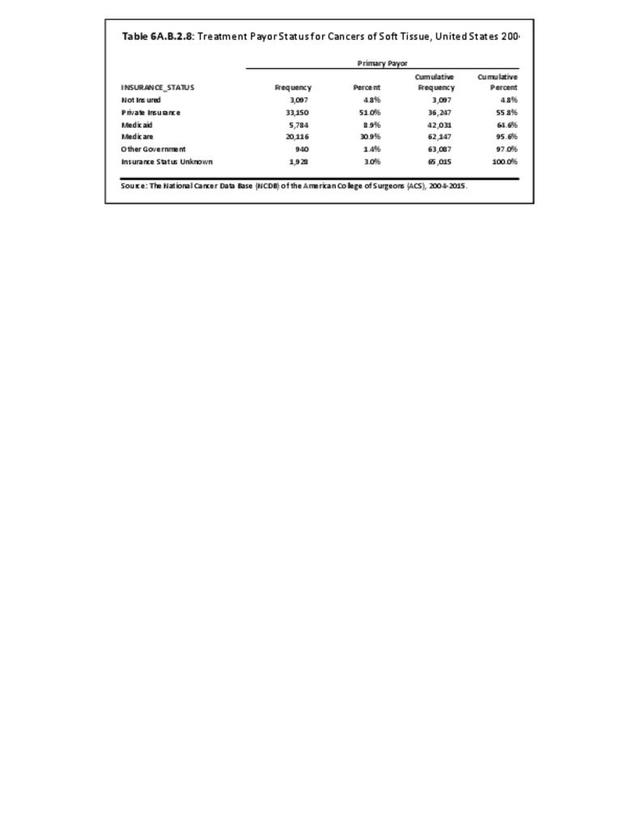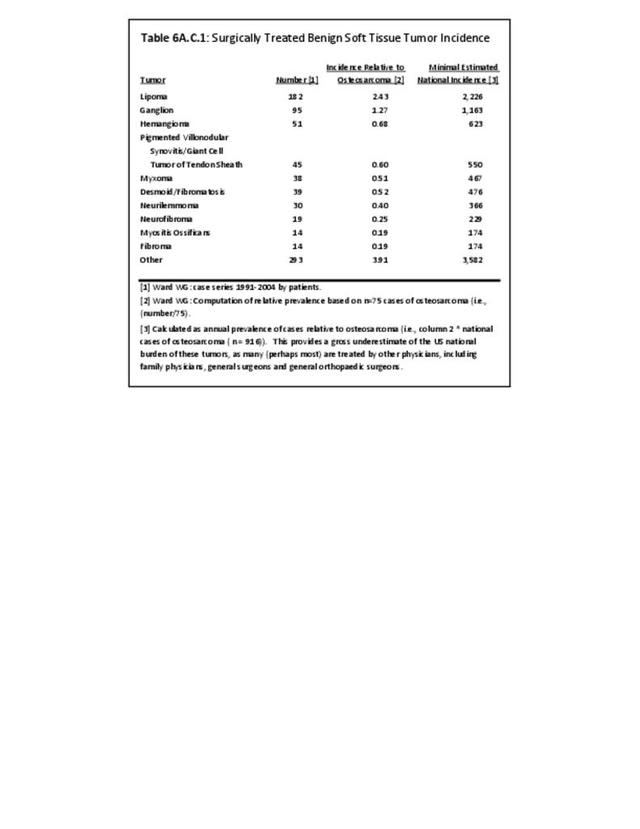SEER estimates an average of 3,260 people were newly diagnosed with cancer of the bones and joints, excluding myeloma, lymphoma, and leukemias, in 2017. During the same year, an estimated 1,550 people died from cancer of the bone and joints. The number of new cases of bone and joint cancers was estimated to be 1.0 per 100,000 people per year during the years 2012-2016.1 However, death rates from bone and joint cancers have declined slightly (0.2% per year) since 1982-2016, following a 9.9% decline from 1975-1982.2 Approximately 40% of bone cancers are diagnosed at a localized stage, for which the 5-year relative survival is 85%.3 The overall 5-year relative survival rate in the 2004-2015 NCDB Database set for Bone and Joint cancers was 65% but is higher for all combined chondrosarcomas (74%) than all combined osteosarcomas (60%). (Reference Table 6A.A.1.0 PDF CSV and Table 6A.A.1.5.1 PDF CSV. See Table 6A.B.1.1 PDF CSV and Table 6A.B.1.2 PDF CSV for the NCDB database data regarding the two- and five-year survivorship of all bone and joint sarcomas.)
Myeloma occurs up to ten times more frequently than bone and joint cancers and is not defined as a rare cancer as the incidence is just over the 6/100,000 rare cancer definition. In 2019, myeloma was estimated to be diagnosed in 32,110 persons per year, an incidence rate of 6.9 per 100,000 persons per year. An estimated 12,960 persons will die of myeloma in 20194, with a death rate of 3.3 per 100,000 persons. (Reference Table 6A.A.1.2.1 PDF CSV and Table 6A.A.1.2.2 PDF CSV)
- 1. National Cancer Institute, Surveillance, Epidemiology, and End Results (SEER) Program. SEER *Explorer. Bones and Joints Cancer 5-Year Age-Adjusted Incidence Rates, 2012-2016 (Recent Rates). https://seer.cancer.gov/explorer Accessed July 30, 2019.
- 2. National Cancer Institute, Surveillance, Epidemiology, and End Results (SEER) Program. SEER *Explorer. Bones and Joints Cancer Long-Term Trends in U.S. Mortality Rates, 1975-2016 (Long-Term Trends). https://seer.cancer.gov/explorer Accessed July 30, 2019.
- 3. American Cancer Society. Cancer Facts & Figures 2017. Special section: rare cancers in adults, p 36. Atlanta: American Cancer Society; 2017. https://www.cancer.org/content/dam/cancer-org/research/cancer-facts-and-... Accessed January 22, 2018.
- 4. National Cancer Institute. Surveillance, Epidemiology, and End Results Program (SEER). Cancer Stat Facts: Myeloma. https://seer.cancer.gov/statfacts/html/mulmy.html Accessed August 5, 2019.
Edition:
- Fourth Edition

